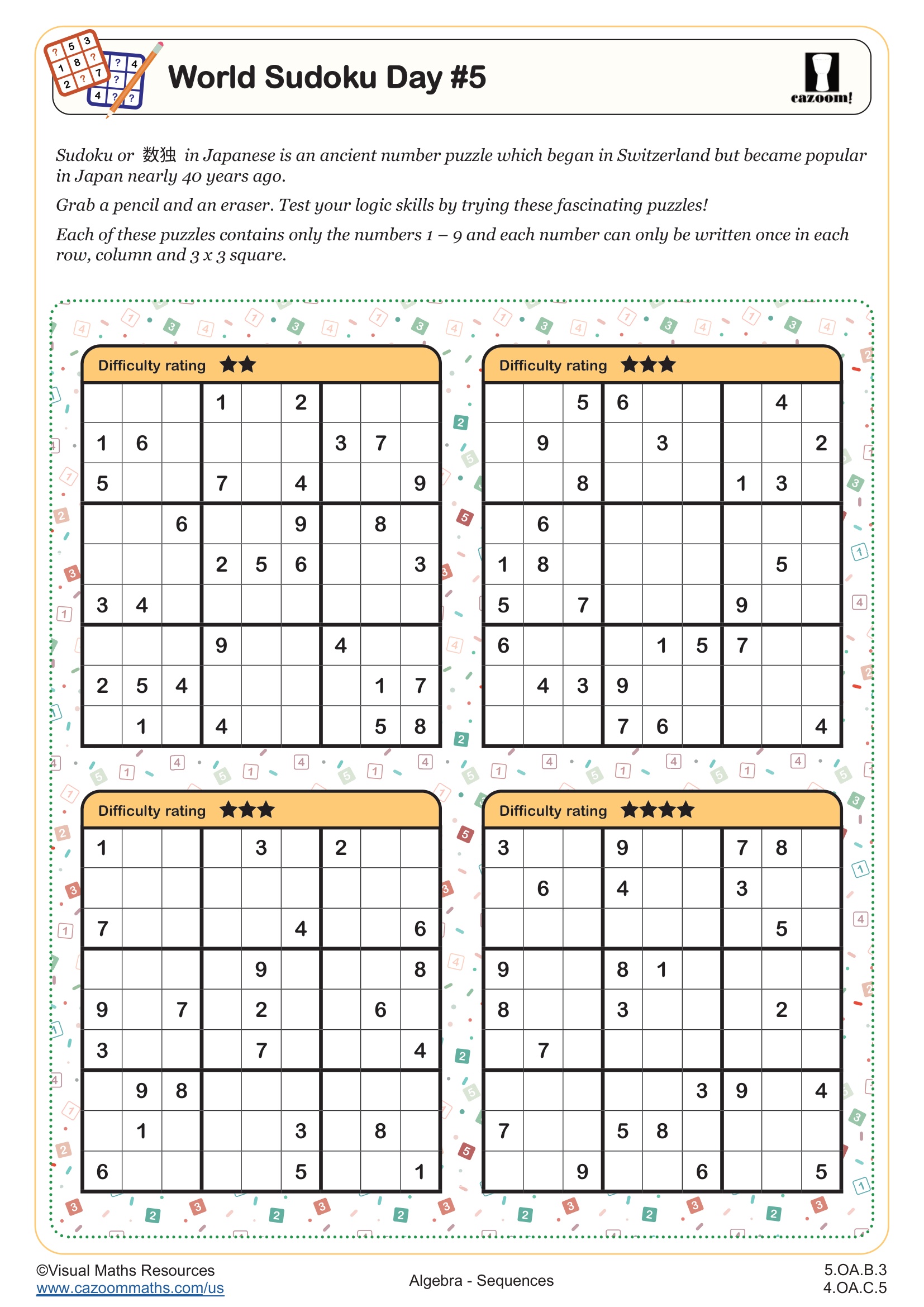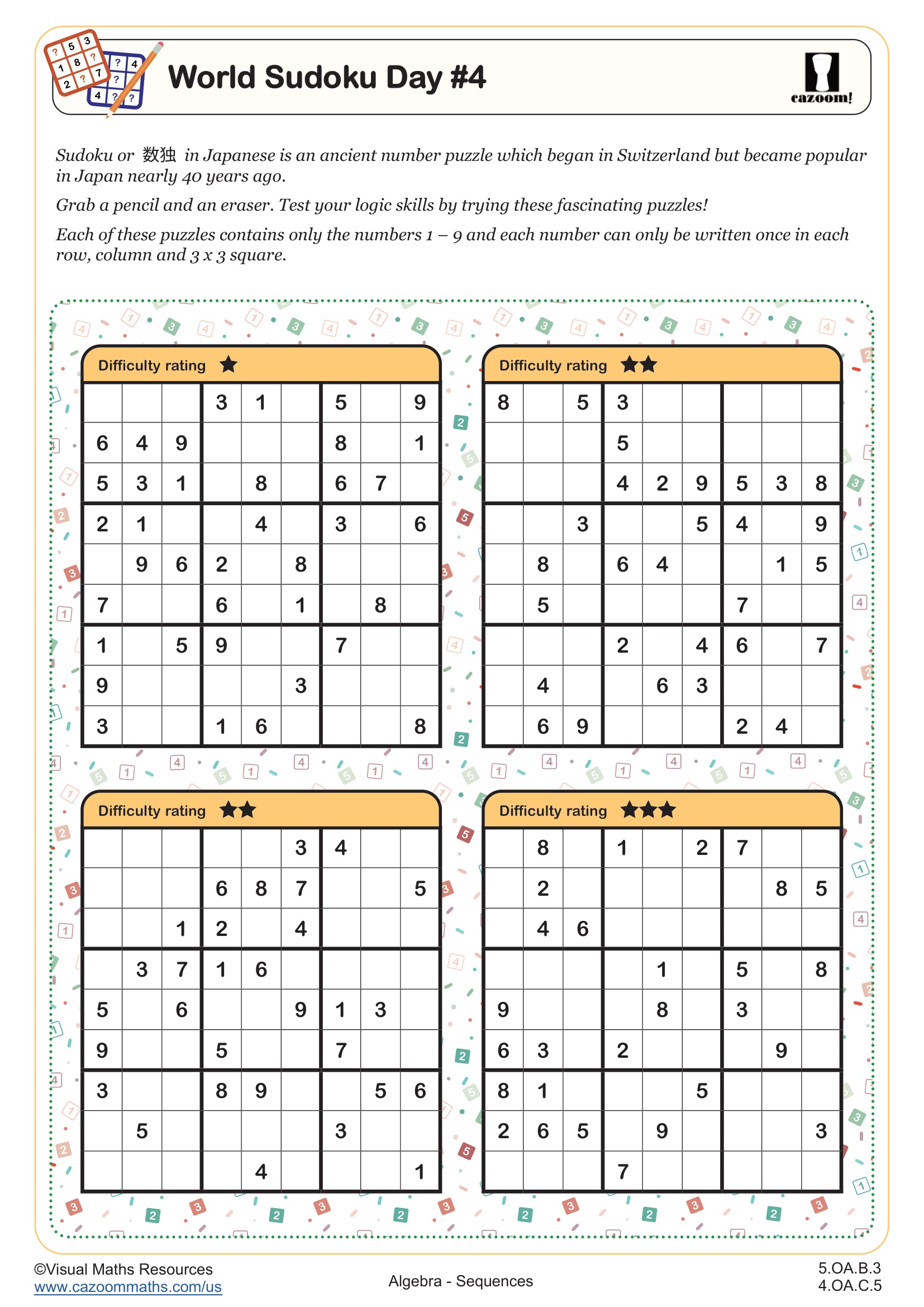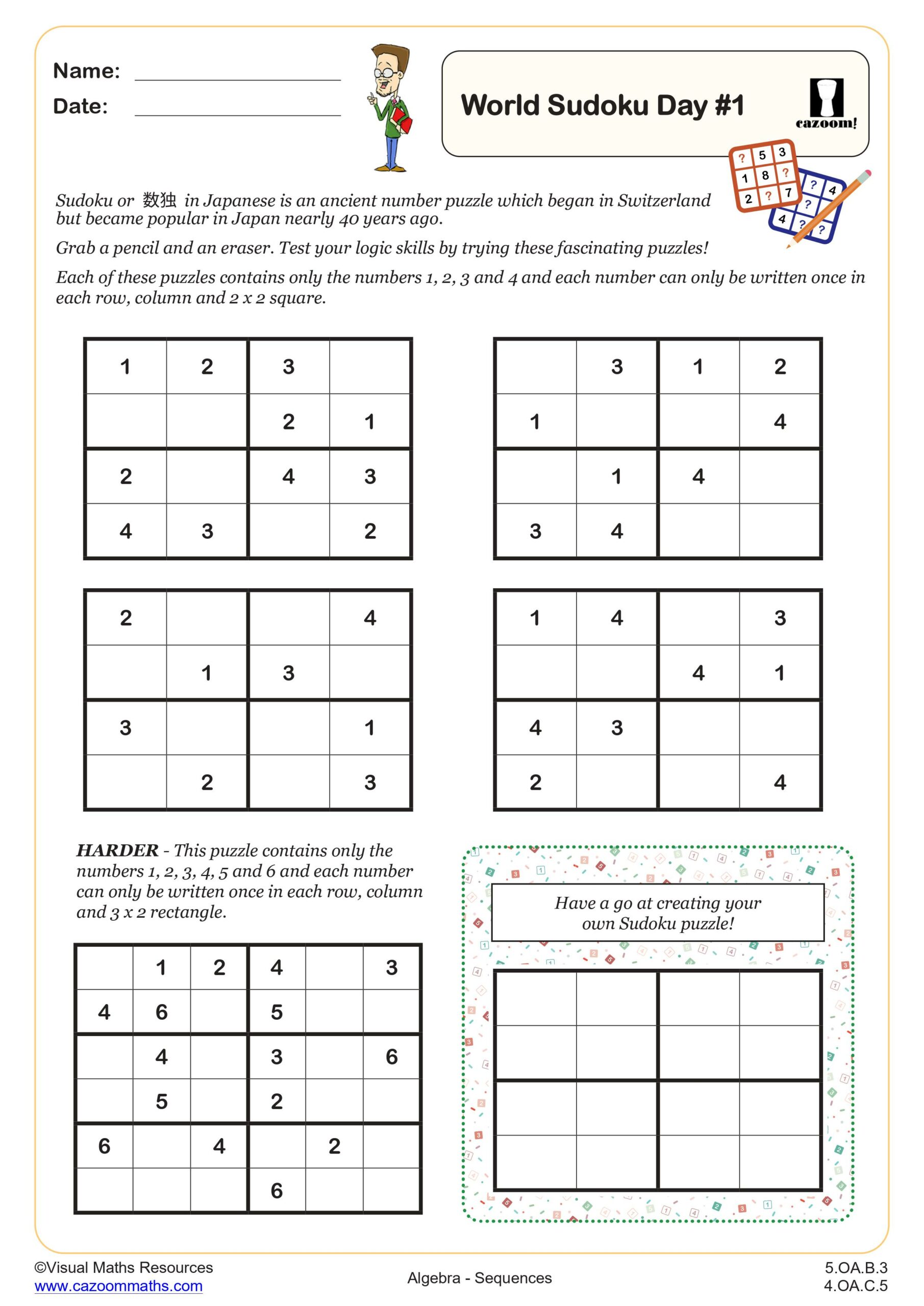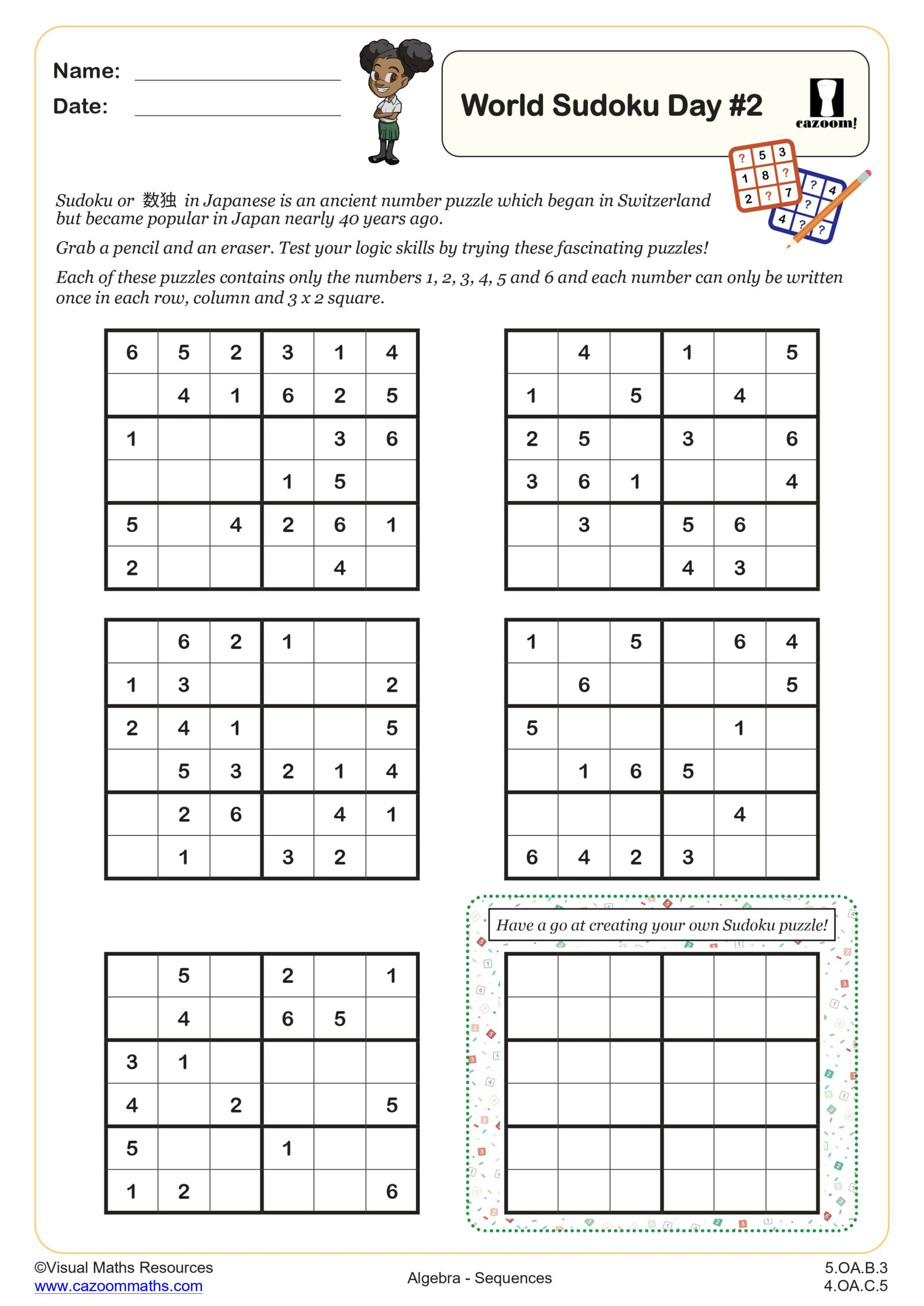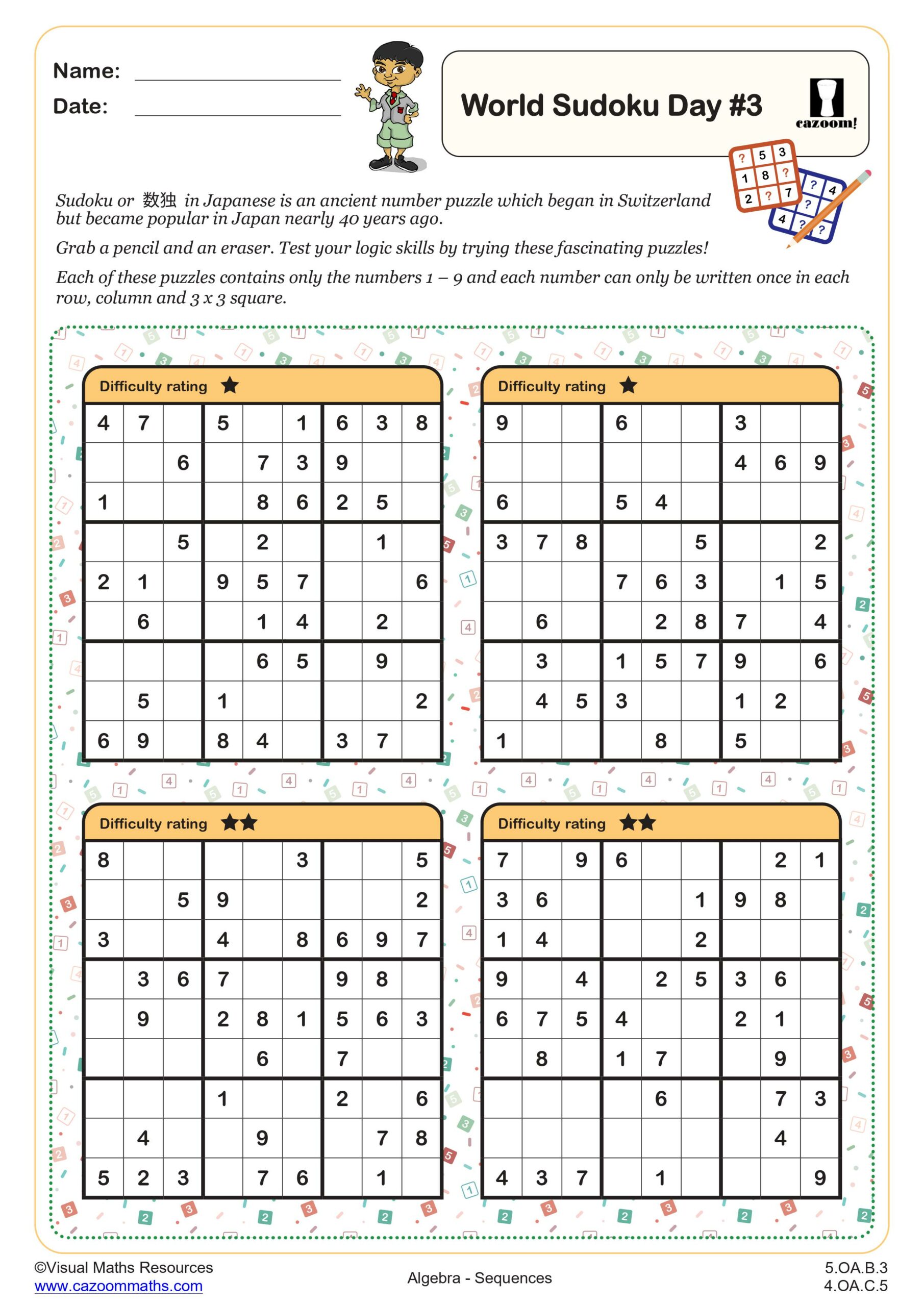World Sudoku Day #5 WORKSHEET
Suitable for Grades: 4th Grade, 5th Grade
CCSS: 4.OA.C.5, 5.OA.B.3
CCSS Description: Generate a number or shape pattern that follows a given rule. Identify apparent features of the pattern that were not explicit in the rule itself. For example, given the rule “Add 3” and the starting number 1, generate terms in the resulting sequence and observe that the terms appear to alternate between odd and even numbers. Explain informally why the numbers will continue to alternate in this way
Generate two numerical patterns using two given rules. Identify apparent relationships between corresponding terms. Form ordered pairs consisting of corresponding terms from the two patterns, and graph the ordered pairs on a coordinate plane. For example, given the rule “Add 3” and the starting number 0, and given the rule “Add 6” and the starting number 0, generate terms in the resulting sequences, and observe that the terms in one sequence are twice the corresponding terms in the other sequence. Explain informally why this is so.
Generate two numerical patterns using two given rules. Identify apparent relationships between corresponding terms. Form ordered pairs consisting of corresponding terms from the two patterns, and graph the ordered pairs on a coordinate plane. For example, given the rule “Add 3” and the starting number 0, and given the rule “Add 6” and the starting number 0, generate terms in the resulting sequences, and observe that the terms in one sequence are twice the corresponding terms in the other sequence. Explain informally why this is so.
World Sudoku Day #5 WORKSHEET DESCRIPTION
Celebrate World Suduko Day on September 9th with our carefully selected puzzles suitable for all ages. This page of Sudoku puzzles is specifically designed to engage young minds in a fun and educational way. Sudoku, a classic logic-based puzzle game, offers a myriad of benefits beyond just entertainment including: cognitive development, critical thinking, pattern recognition, logical reasoning, problem-solving skills, patience and perseverance and sense of achievement.
World Suduko Day #5 consists of 4 classic 9x9 suduko puzzles and has been recommended for use with forth grade students however this is just a guide. We have curated 5 pages of puzzles of varying difficulty for your students to enjoy in the classroom, form room or at home.
